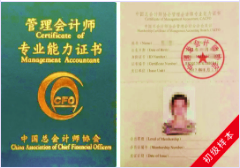托福听力背景知识:考古年代的测定
If there is one fundamental issue on which most archaeologists can generally agree, it is the importance of chronology in studying the past. Although one of the most important contributions that archaeology can make is the study of cultures over long time spans, control of the time dimension is crucial in almost all kinds of archaeological research. In studying the archaeological record, the archaeologist needs to differentiate those materials that are contemporary and those that reflect the passage of time. Given the importance of establishing the temporal relationships of archaeological remains, it is not surprising that until the introduction of dating techniques from the physical sciences (e.g., chemistry and nuclear physics), issues of chronology dominated archaeology. Archaeologists can now access a wide variety of techniques to estimate the age of archaeological remains, and can now turn their attention to issues other than chronology.
The dating methods used by archaeologists vary considerably in precision and the nature of the material actually dated. Age determinations for archaeological materials may be direct or indirect. Direct dates are derived from the actual artifact, feature or ecofact to determine the age of the material. Indirect dates are based on material associated with the archaeological item of interest. For example, ash in an ancient hearth can be dated by the radiocarbon dating method (discussed below) and other material, such as pottery, stone tools, and fragments of animal bone associated with the hearth, can then be indirectly assigned the same age. This assignment, however, assumes that there is sufficient evidence indicating that both the hearth and the artifacts reflect the same contemporaneous event, thus allowing the extension of the direct date to the other related material.
Dates may be relative or absolute in their scale of measurement. Relative dating simply orders remains into a ranked chronological sequence, where the age of each is relative (i.e., earlier than later than, or contemporary) to the others. The preliminary steps in most archaeological research usually employ relative dating methods to order artifacts, features and sites into temporal sequences. Absolute dating provides a specific calendar age estimate (e.g., 1000 years ago), thus allowing determination of the actual amount of time difference between absolute dates. Although absolute dates provide a calendar age, they vary in their precision, as many have an uncertainty factor attached that indicates a range of time rather than a specific date.
Although dating methods are used to determine the age of objects and events, these dates are ordered to establish a chronology that provides a temporal framework in which the archaeological material can be placed. This chronology-building process is the foundation for archaeological studies. In this chapter, we examine some of the major techniques that have been developed to date the archaeological past and material from the archaeological record
课程推荐
- 中级会计职称普通班
- 中级会计职称特色班
- 中级会计职称精品班
- 中级会计职称实验班
| 课程班次 | 课程介绍 | 价格 | 购买 |
|---|---|---|---|
| 普通班 | 班次特色 |
240元/一门 450元/两门 680元/三门 |
购买 |
| 课程班次 | 课程介绍 | 价格 | 购买 |
|---|---|---|---|
| 精品班 | 班次特色 |
680元/一门 1200元/两门 1800元/三门 |
购买 |
- 中级会计职称机考模拟系统综合版
- 中级会计职称机考模拟系统实验版
| 模拟题库 | 题库介绍 | 价格 | 购买 |
|---|---|---|---|
综合版 |
题库特色 |
120元/一门 200元/两门 240元/三门 |
购买 |
| 模拟题库 | 题库介绍 | 价格 | 购买 |
|---|---|---|---|
| 实验版 | 题库特色 |
240元/一门 480元/两门 720元/三门 |
购买 |
最新新闻
网站地图
专业知识水平考试:
考试内容以管理会计师(中级)教材:
《风险管理》、
《绩效管理》、
《决策分析》、
《责任会计》为主,此外还包括:
管理会计职业道德、
《中国总会计师(CFO)能力框架》和
《中国管理会计职业能力框架》
能力水平考试:
包括简答题、考试案例指导及问答和管理会计案例撰写。
- 管理会计师PCMA 免费试听
- 中级管理会计师 免费试听
- 税务管理师 免费试听
- 智能财务师 免费试听
- 国际注册会计师 免费试听
- 国际财务管理师 免费试听
- 初级会计职称考试 免费试听
- 中级会计职称考试 免费试听
- 注册会计师考试 免费试听
- 全国外贸会计考试 免费试听
- 会计实务操作 免费试听
- 管理会计师 免费试听
-
初级会计职称招生方案
·特色班
·精品班
·实验班

初级会计职称网上辅导 -
中级会计职称招生方案
·普通班
·特色班
·精品班

中级会计职称网上辅导
专业知识水平考试:
考试内容以管理会计师(中级)教材:
《风险管理》、
《绩效管理》、
《决策分析》、
《责任会计》为主,此外还包括:
管理会计职业道德、
《中国总会计师(CFO)能力框架》和
《中国管理会计职业能力框架》
能力水平考试:
包括简答题、考试案例指导及问答和管理会计案例撰写。

 您现在的位置:
您现在的位置:




